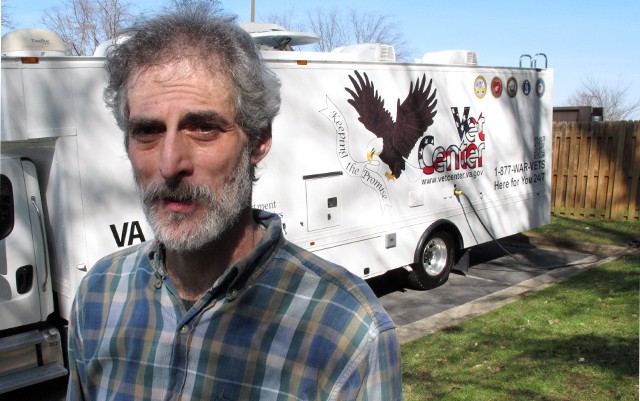One of the arguments that opponents of legalization like to use is that they are trying to “protect our communities and our youth”. Over and over again, studies are proving that cannabis legalization is not a threat to increased teen use and it can definitely boost the economy both at the local and state level – but statistical studies simply aren’t enough for some. They still want to push that all this is dangerous, that it will cause the downfall of society as we know it.
Well, the cannabis industry is proving these people wrong as they continuously find ways to give back to their communities. Those running retail marijuana dispensaries or cultivation facilities want to be taken seriously, to be seen as accomplished business owners, not stoner burnouts. In order to do so, many have taken it upon themselves to find ways to engage in their communities, whether it be local or statewide, and make a point – people who smoke weed are just like everyone else.
Even some of the measures that were implemented at the start of legalization were meant to ensure that everyone would see the benefits of legalization, not just those who use cannabis. Since the beginning it has been a struggle to change a century old view on marijuana and those who use it for recreational purposes – and, in many ways, it’s paying off and the industry is certainly becoming more respected throughout the country with each passing day.
Scholarships Funded by the Industry
Pueblo, Colorado chose to vote on (and pass) an additional tax on recreational marijuana cultivation facilities in the city. The extra revenue brought in by this tax is being used to fund scholarships for high school seniors who are headed off to college. This year is the first year that the scholarships will be available and they will start by offering twenty-five $1,000 scholarships for the school year starting fall 2016.
“It’s incredible,” Beverly Duran, the executive director of the Pueblo Hispanic Education Foundation, told USA Today. “Every year we get a nice pool of students… but we can always only award to a small percentage. This for us expands that to extraordinary lengths.”
Over the next five years, they will be phasing in the tax, at which point 50% of the funds would be used for scholarships and the remainder will be used in public improvement projects as well as medical marijuana research. This town saw opportunity with cannabis legalization and they ran with it – and now 25 teens will be headed off to college with $1,000 to put toward their education.
Funding for Schools
When creating the taxes for the marijuana program in Colorado, one of the specific taxes that was decided on was a 15% tax on wholesalers when they sell marijuana to retailers. This 15% is money that is directly allocated to special school taxes, which are meant to be used to build and repair schools throughout the state.
“It is money we’re trying to put to good use,” said Sen. Pat Steadman, a Democrat and member of the Colorado Legislature’s budget-writing committee. “We had no tax money to combat these ills when it was being sold illegally.”
Unfortunately, this does get a little misconstrued when people talk about the taxes imposed on marijuana sales. There is a separate tax that is paid at the register when people purchase marijuana from a dispensary – but this tax is allocated to the state’s’ general fund and mostly goes to drug prevention education, research and substance abuse treatment – all of which will still be beneficial to the state.
Donating to a Student Trip
A school in Nevada was faced with losing a large scholarship that sent a group of teens to Washington D.C. every year as a part of the “Close Up Washington D.C.” program. The program is designed to allow high school students to see how things are really run in Washington, as well as giving them a chance to see famous monuments and go to exceptional museums. Unfortunately, that program also comes with a hefty tuition tag that was just unreachable by the school and students alone.
Luckily for them, a couple of local medical marijuana businesses decided to pitch in so that the kids could still go on their trip to D.C. Pahrump’s M&M Development donated $3,000 and Nye County Consultants Association donated $5,000. Together it was enough for the trip. Nye County District 4 Commissioner Dan Schinhofen took care of the litigation end of the agreement and he also says he is not surprised by these companies’ contributions.
“I know these guys want to be part of the community,” he said. “I think they will create a lot of jobs and a lot of revenue and a much-needed product for some people. So they didn’t surprise me at all. I just think they’re going to really be a big benefit to the community.”
Helping the Homeless Find Homes
Heading back to Pueblo, Colorado for a moment, the Pueblo County commissioners recently approved a grant for $25,000, which came from marijuana taxes, to go towards the Pueblo Area Law Enforcement Chaplain’s Crop. The money will be used to help reduce the homeless population by helping people with family out of town or out of state return to that family support system for free.
Previously, they were only able to send people about 100 miles, which may have left some stranded halfway home. With this grant, they will be able to help people get all the way across the country to get back to a stable support system if need be. They pay for bus transportation (such as Greyhound) and motel vouchers for each trip.
“The primary purpose is to be able to send homeless people back to their home — back to the strongest support group that we find in our society, which is typically family,” he (Douglas Cox, Pastor at Parkhill Baptist Church) said.
Aurora, another Colorado city, is also using marijuana tax revenue to help the homeless – but with a bit of a different approach. It will provide $4.5 million dollars to programs that help the homeless population over the next three years.
One of these programs in particular offers a place for homeless children to go after school where they will be fed and offered supplies for school and other resources, as well as get the opportunity to go on field trips, and have experiences they would otherwise miss out on.
“It allows them to not worry about where their next meal is going to come from or how stressed out their parents are going to be or where they’re going to sleep for tomorrow night. They get to just be kids,” Vizina said of the after-school program.
Free Medical Marijuana for Patients
When Alaska first legalized medical marijuana in 1997, they did not offer a structure like many of the states that followed. The use of medical marijuana was allowed for a very limited six conditions – but it was still illegal to sell, buy and transport, leaving hundreds of patients without a way to access a medicine that could change their quality of life for the better.
As a way to combat this senselessness, a group of three friends started delivering cannabis (they never say, but I would imagine they grow it themselves) to patients that they knew personally. In less than a year, they had created a Facebook group called The Green Angels, with over 400 members, where people could post a request for medical marijuana and one of the “angels” would deliver it to them free of charge.
Others had tried similar services in Alaska in the past, but they always asked for a “donation” in exchange for the “free” marijuana (something that is causing confusion and frustration in Washington D.C. since legalization passed). Of course, these other services were all shut down, but The Green Angels never exchange money for their marijuana, so they continue to deliver to patients in need whenever they can.
This proves that even when there is potential for profit, many people in the cannabis industry truly just want to be a part of something bigger. They want to help patients find relief. They want to see people enjoy a safer alternative to alcohol when going out on a Friday night – it’s not all about the money the commercial industry generates.
People see those funds as an opportunity. This new industry can do so much good, with funds we never would have had otherwise. If every city were able to put tax funds towards ensuring children had a safe place and a warm meal every night, that people who cannot afford it can have access to needed medicine and sending teens on to college with a little less debt, wouldn’t it be something we should do? We have that opportunity with the rapid expansion of this massive industry and some cities and businesses are already setting the examples we need to be following.







“The Cannabis Industry Finds Ways to Give Back to the Community”
— by being heavily taxed? The Pueblo initiative was not sponsored by dispensaries; the local sales tax surcharge is not an example of them finding “Ways to Give Back to the Community”! Cannabis in Colorado is being taxed in volation of our Constitution, which declares that it should be both taxed and regulated “in a manner similar to alcohol”; the State and localities have applied sales tax surcharges on cannabis which are utterly unlike the way we tax alcohol and the taxes on cannabis are many times higher than on alcohol, despite the fact that alcohol is very much more dangerous and incurs substantial social costs.
“… studies are proving that cannabis legalization is not a threat to teen use …”
— this is true, but it is about the opposite of what you meant.